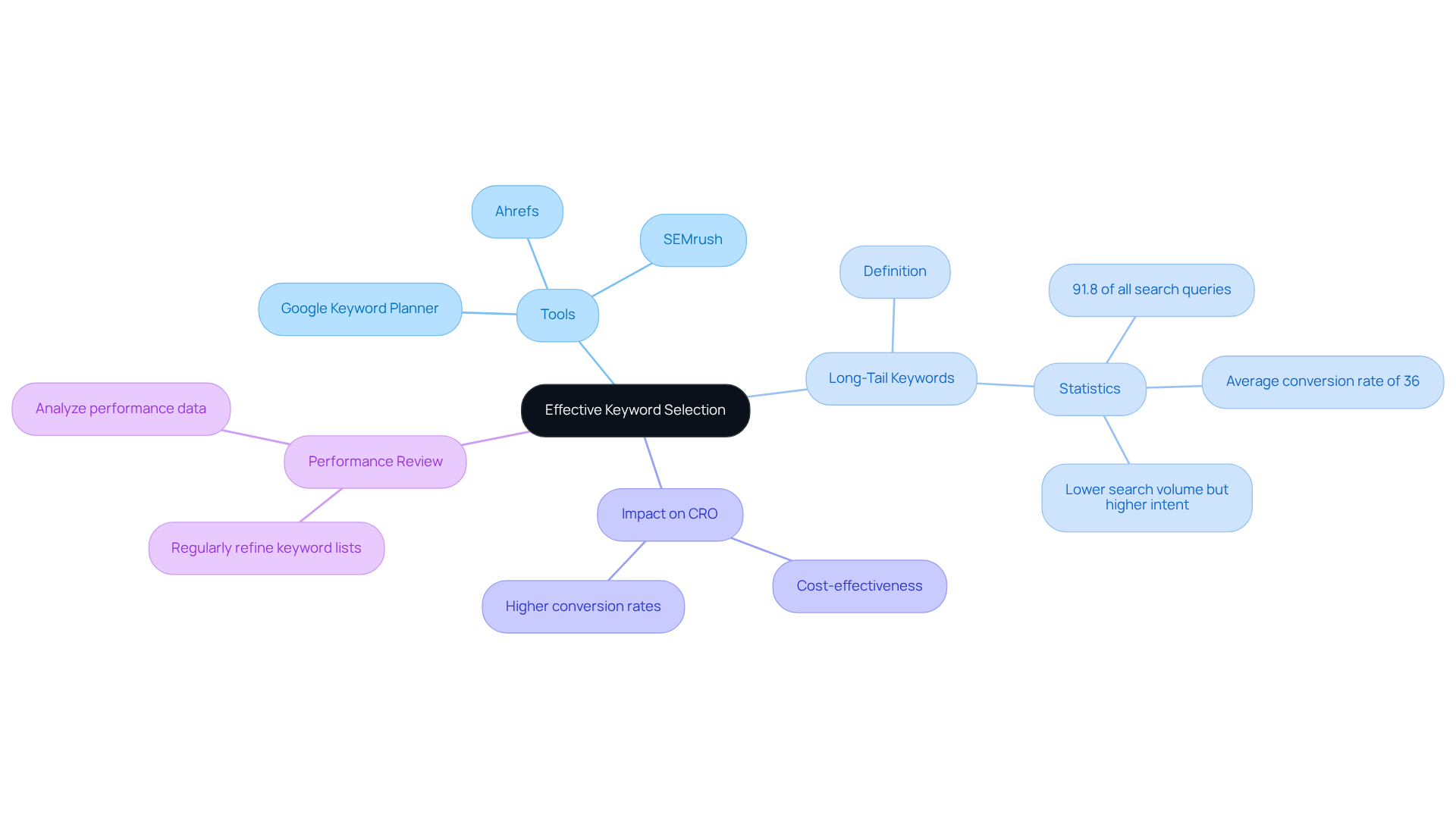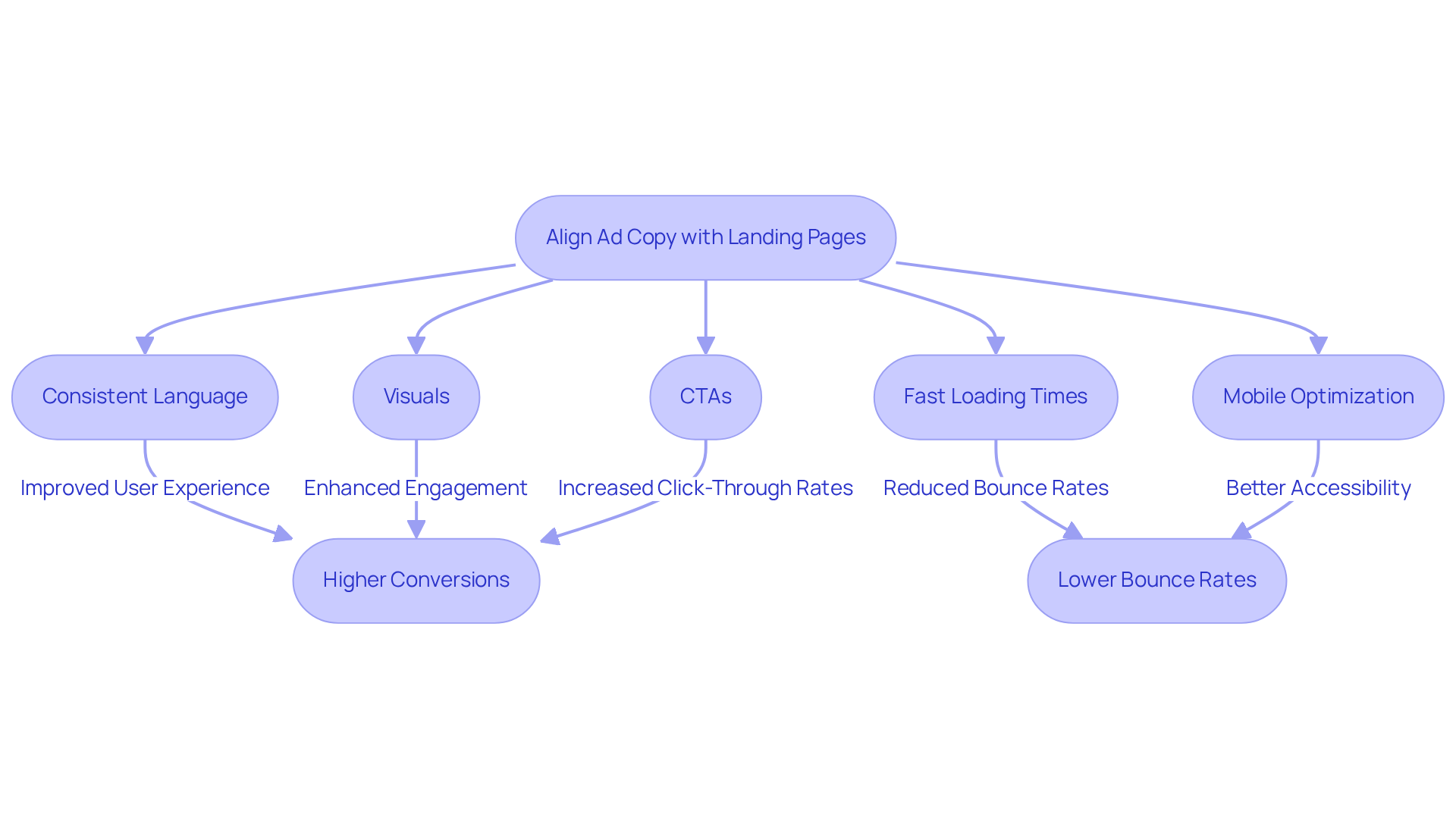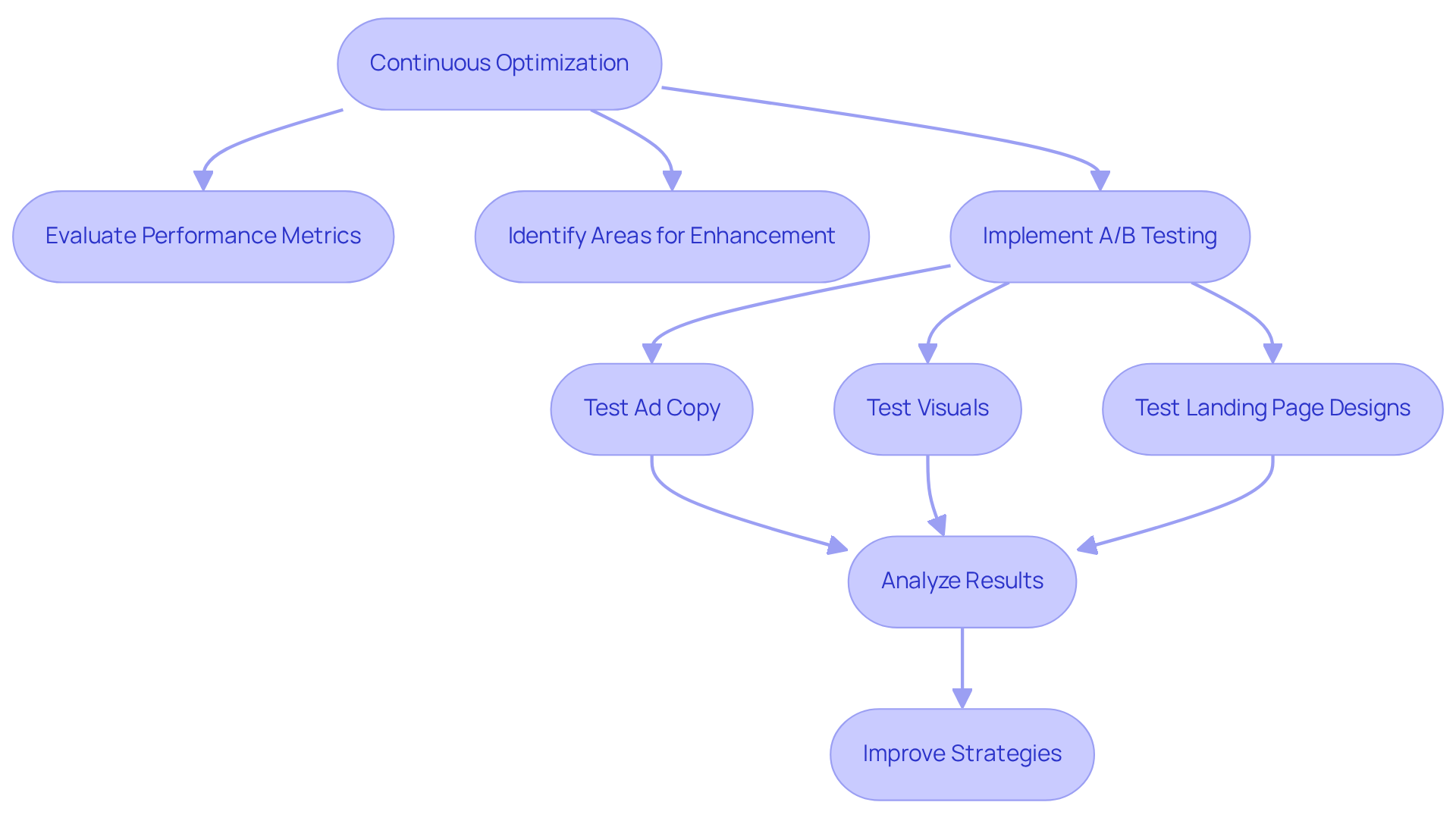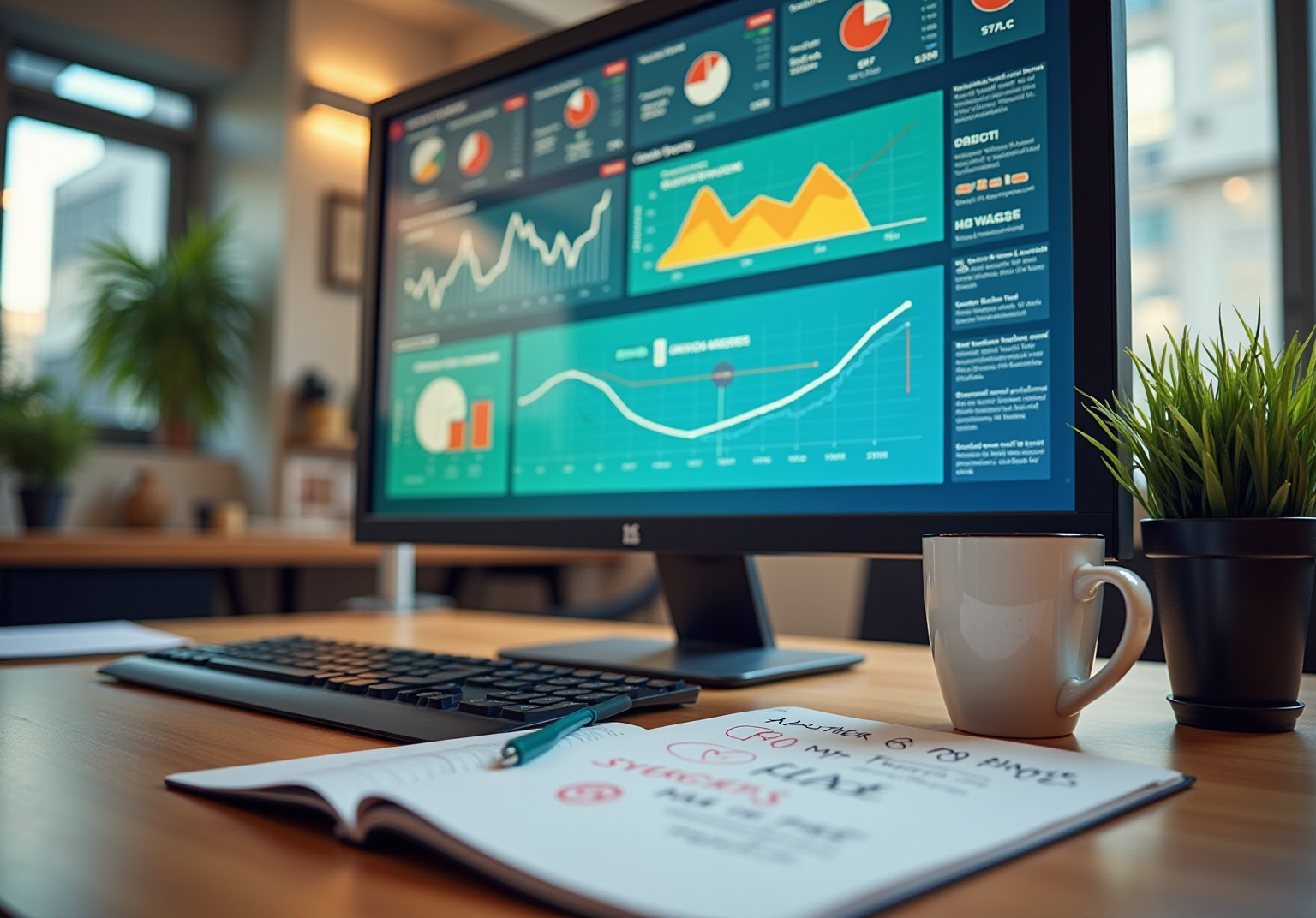
Overview
To elevate a DTC brand's success, four essential PPC strategies must be mastered:
- Understanding of PPC fundamentals
- Selection of effective keywords
- Alignment of ad copy with landing pages
- Implementation of continuous optimization through A/B testing
These strategies not only enhance visibility but also improve conversion rates and ensure sustained growth. By leveraging targeted approaches and data-driven optimizations, brands can maximize their return on investment in an increasingly competitive digital landscape.
Introduction
In the dynamic realm of digital marketing, direct-to-consumer (DTC) brands confront the urgent challenge of distinguishing themselves in a landscape marked by intense competition. Mastering the intricacies of pay-per-click (PPC) advertising emerges as a vital strategy for enhancing visibility and driving conversions. This article explores four pivotal PPC strategies designed to elevate a DTC brand's success:
- Mastering the fundamentals
- Selecting impactful keywords
- Aligning ad copy with landing pages
- Implementing continuous optimization
As the digital marketplace evolves in complexity, one critical question persists: are DTC brands fully harnessing the potential of PPC to realize their growth ambitions?
Understand the Fundamentals of PPC Advertising
PPC, or pay-per-click advertising, represents a pivotal digital marketing model where advertisers incur a fee each time their ad is clicked. This approach empowers companies to achieve immediate visibility on search engines and social media platforms, effectively channeling targeted traffic to their websites. Mastering the essential components of PPC strategies—such as ad auctions, quality scores, and bidding strategies—is crucial for optimizing initiatives. For example, comprehending how quality scores influence ad placement can significantly enhance a brand's visibility and cost-effectiveness.
Brands must also familiarize themselves with diverse ad formats, including search ads, display ads, and remarketing ads, to effectively engage their target audience. As the PPC landscape evolves in 2025, the integration of AI-driven tools and strategies will become increasingly vital. According to industry insights, businesses leveraging AI in their PPC efforts have reported performance increases ranging from 10 to 13%. Furthermore, with 51% of advertisers allocating more than half their budget to Performance Max initiatives, adapting to these new advertising models is essential for maintaining competitiveness.
By solidifying their understanding of these fundamentals, DTC companies can lay a robust foundation for their PPC strategies, ensuring they achieve maximum return on investment (ROI). In fact, in 2025 are projected to yield an average ROI significantly higher than in previous years, underscoring the necessity of a strategic approach to digital advertising. As Brendon Kraham, VP of Global Search Ads and Commerce at Google, emphasizes, "Looking ahead to 2025, you'll see us continue to build user-friendly products across Performance Max, Demand Gen, and Search — powered by Google AI.

Select Effective Keywords for Maximum Impact
Choosing effective keywords is paramount for maximizing the impact of PPC strategies, particularly for DTC companies striving to enhance their [Conversion Rate Optimization (CRO)](https://parahgroup.com) efforts. Parah Group underscores the necessity of utilizing tools such as Google Keyword Planner, SEMrush, and Ahrefs to pinpoint high-volume, low-competition keywords that resonate with brand offerings.
Long-tail keywords, typically comprising three or more words, hold particular value as they encapsulate specific search queries and reveal clearer user intent. Notably, 91.8% of all search queries are long-tail keywords, underscoring their dominance in search behavior. This specificity frequently translates into significantly , averaging 36%, compared to generic keywords, and can facilitate more cost-effective conversions.
However, it is crucial to recognize that long-tail keywords may exhibit lower search volumes, which can present challenges in advertising strategies. Regularly reviewing and refining keyword lists based on performance data is essential to sustain the relevance and efficacy of PPC strategies.
By concentrating on the right keywords, DTC brands can amplify ad visibility and attract qualified traffic, ultimately driving enhanced profitability and fostering sustainable growth through effective CRO strategies.

Align Ad Copy and Landing Pages for Higher Conversions
Enhancing results hinges on the seamless connection between your ad text and landing page content. This connection involves employing consistent language, visuals, and calls-to-action (CTAs), all of which foster a . A well-optimized landing page must deliver on the promises made in the ad, providing the expected information to visitors. Fast loading times and mobile optimization are critical components that significantly enhance user experience and boost conversion rates.
For example, a small online jewelry retailer experienced an impressive 200% increase in sales after launching a targeted PPC campaign that emphasized alignment between their ads and landing pages. By prioritizing this alignment, DTC companies can effectively reduce bounce rates—often exceeding 70% for misaligned ad copy—and improve their overall PPC strategies.
Parah Group's comprehensive strategy for Rate Optimization (CRO) utilizes PPC strategies to ensure that paid advertisements and landing pages are seamlessly coordinated, fostering substantial growth and increased rates for companies. As experts note, "Ensuring consistency between landing page content and ad messaging creates a seamless experience for visitors," underscoring the necessity of this strategic approach.
Additionally, common pitfalls such as neglecting mobile optimization or failing to match ad promises can lead to missed conversion opportunities. By addressing these aspects, companies can unlock significant growth potential, as demonstrated by Parah Group's proven strategies that focus on maximizing profitability through comprehensive CRO efforts.

Implement Continuous Optimization and A/B Testing
Continuous optimization is vital for maximizing the effectiveness of PPC strategies. By consistently evaluating crucial performance metrics such as click-through rates (CTR), customer acquisition rates, and cost-per-acquisition (CPA), DTC companies can identify areas ripe for enhancement. Implementing systematic A/B testing across various elements—including ad copy, visuals, and landing page designs—empowers companies to discern which variations yield the most impactful results. Notably, organizations that have adopted a rigorous A/B testing strategy report average improvements in CTR and conversion rates, significantly bolstering their return on investment (ROI).
Furthermore, leveraging automation tools can streamline the optimization process, enabling brands to concentrate on strategic decision-making rather than manual adjustments. This iterative approach not only with evolving business objectives but also ensures that these strategies remain competitive in an ever-changing market. Insights from marketing professionals underscore that continuous optimization transcends mere tactic; it is a fundamental necessity for sustained success in digital marketing.

Conclusion
Mastering PPC advertising is not just beneficial; it is essential for direct-to-consumer (DTC) brands that aspire to enhance their market presence and drive sales. Understanding the fundamentals of PPC, selecting effective keywords, aligning ad copy with landing pages, and implementing continuous optimization strategies are critical steps that can significantly improve advertising performance and ROI. In a landscape that evolves rapidly—especially with advancements in AI and automation—adopting these strategies is crucial for maintaining competitiveness and achieving sustainable growth.
Key insights from this article underscore the necessity of leveraging effective keywords, particularly long-tail variations, to attract qualified traffic and enhance conversion rates. Furthermore, the alignment between ad messaging and landing page content plays a pivotal role in creating a seamless user experience, which is vital for maximizing conversions. Continuous optimization through A/B testing empowers brands to refine their strategies based on real-time data, ensuring adaptability to changing market dynamics.
The significance of these PPC strategies cannot be overstated. DTC brands are strongly encouraged to embrace these best practices not only to boost immediate advertising effectiveness but also to foster long-term success in a competitive digital marketplace. By prioritizing these essential approaches, brands can unlock new levels of profitability and establish a robust foundation for future marketing endeavors.
Frequently Asked Questions
What is PPC advertising?
PPC, or pay-per-click advertising, is a digital marketing model where advertisers pay a fee each time their ad is clicked, allowing companies to gain immediate visibility on search engines and social media platforms.
Why is understanding the components of PPC strategies important?
Understanding components such as ad auctions, quality scores, and bidding strategies is crucial for optimizing PPC initiatives, enhancing a brand's visibility, and improving cost-effectiveness.
What are the different ad formats in PPC advertising?
The diverse ad formats in PPC advertising include search ads, display ads, and remarketing ads, which help engage target audiences effectively.
How is AI impacting PPC advertising in 2025?
The integration of AI-driven tools and strategies is becoming increasingly vital in PPC advertising, with businesses leveraging AI reporting performance increases of 10 to 13%.
What is the significance of Performance Max initiatives for advertisers?
Performance Max initiatives are significant as 51% of advertisers allocate more than half their budget to these initiatives, making adaptation to new advertising models essential for competitiveness.
What is the expected ROI for successful PPC strategies in 2025?
Successful PPC strategies in 2025 are projected to yield an average ROI significantly higher than in previous years, highlighting the importance of a strategic approach to digital advertising.
What is the vision for the future of PPC advertising according to industry leaders?
Industry leaders, such as Brendon Kraham from Google, emphasize a continued focus on building user-friendly products across Performance Max, Demand Gen, and Search, powered by Google AI.
FAQs











